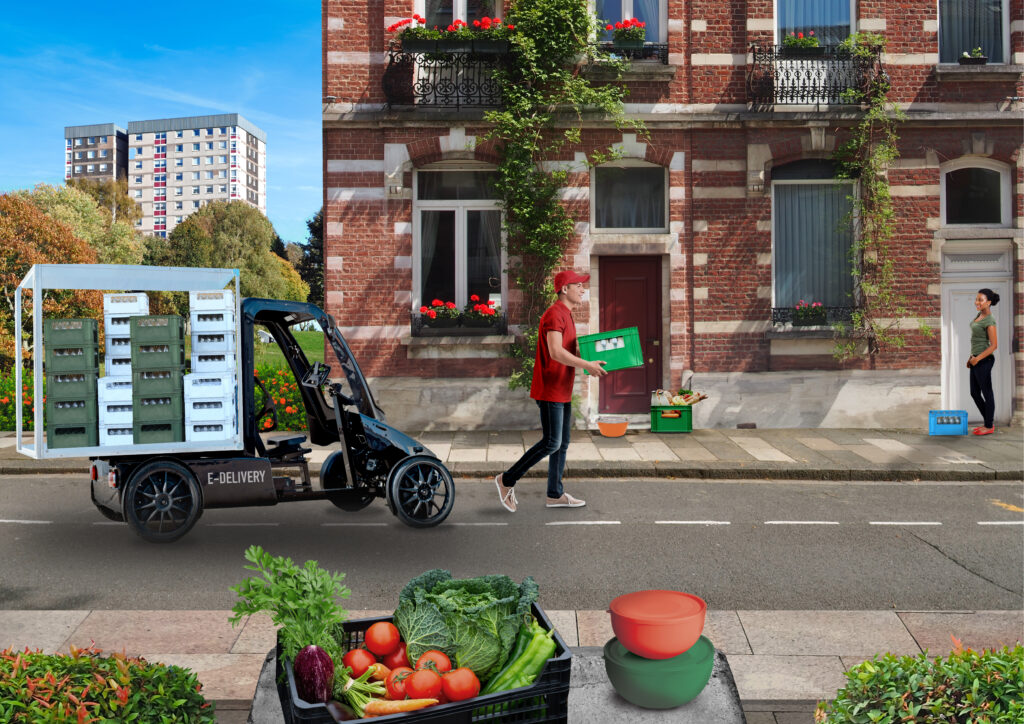Make Throwaway Go Away! The case for reuse in the PPWR
Redesigning Packaging and Packaging Waste in the EU
The revision of the EU’s Packaging and Packaging Waste regulation (PPWR) presents a unique opportunity to tackle one of the biggest sources of plastic pollution in Europe – packaging waste. By transitioning towards more circular packaging systems – and reuse systems in particular – the EU has the chance to significantly curb plastic packaging waste, reducing resource use as well as greenhouse gas emissions.
Yet, intense lobbying and misinformation campaigns from the single-use packaging industry and takeaway sector threaten this goal. The Rethink Plastic alliance urges decision-makers to take their responsibility towards European citizens and the environment seriously and ensure the strongest possible Packaging and Packaging Waste regulation (PPWR).
Packaging Waste regulation: reusable packaging systems work and are already in use

The shift away from single-use to reuse is not a utopian idea, but rather a transition that has already started. It needs the fundamental support of European policies to fully thrive. But what exactly is “packaging reuse”?
Reuse represents a system in which packaging is designed, placed on the market, maintained in circulation and handled so that it accomplishes a vast amount of trips or rotations during its life span. There are ample independent scientific studies showing the benefits of reusable packaging systems compared to single-use. In line with the waste hierarchy, these scientific studies demonstrate that well-designed reuse systems can bring significant benefits to environmental and human health. They reduce greenhouse gas emissions as well as resource use, energy, water, and (often harmful) chemical use.
Decision-makers should base their decisions on this peer-reviewed literature rather than on biased studies sponsored by vested interests of the single-use lobby. Improvements of recycling systems alone will not suffice to tackle the packaging waste crisis. It is essential to rely on long-term and resilient solutions, like reuse and resource use prevention.
Several EU countries already have legislation promoting reusable packaging for the takeaway sector in place. There is also a growing alliance of businesses that supports the transition to reuse packaging systems at local, regional, and national level, partly supported by reuse legislation. Yet, to ensure such packaging reuse systems can scale up across the EU and compete with single-use applications, a strong signal from EU legislation with the Packaging and Packaging Waste regulation is needed.
Single-Use Plastics: TakeAway, not Throwaway!
Transitioning the packaging market towards reuse systems is particularly important in the takeaway sector. Consumption on the go leads to overcharged municipal mixed waste systems and a littered environment. Unsurprisingly, these packaging types are in the top 10 items of the most commonly found single-use plastic items on European beaches, and their end-of-life disposal consists of incineration and landfill in most cases. They also represent a significant part of municipal waste. A recent study in Ireland has estimated that between 2012 and 2017 approximately €409 million has been spent by 24 Councils on street litter cleaning and rubbish bin collections. This equates to an average of €68 million per year, or around €6 billion per year extrapolated to the EU population. By setting strong reuse targets in the PPWR, the EU has the chance to relieve this burden from the taxpayer.
Why substituting plastic packaging with paper ones is not the answer
To successfully protect the environment and preserve global biodiversity, it is essential that the Plastic Packaging Waste regulation does not revert to regrettable material substitution. Industry lobbying campaigns present single-use paper packaging as a seemingly “sustainable alternative” to plastic packaging. Yet, as forest and wildlife NGOs have made clear for many years, paper packaging is not the solution. With the rise in e-commerce and take-away, the use of paper and cardboard packaging is growing exponentially, generating 32.7 million tonnes of cardboard packaging waste in 2020. In the EU, half of all paper produced is now used for packaging. At the same time, three billion trees are cut down annually around the world to meet the demand for paper packaging.
Relatively high recycling rates for paper are often put forward to downplay this trend. However, the paper industry itself states that only half of the paper it produces uses recycled materials. The remainder comes from “virgin pulp” – i.e. forests. Indeed, 30% of the EU’s woody biomass goes to pulp and paper production.
This industry pressure on forests bears known negative environmental consequences – the replacement of biodiverse forests with monoculture plantations, with clearcuts a testimony to a general bad state of European forests. Reusable packaging and reuse systems are the only truly sustainable solutions to the EU’s packaging waste crisis. Find more information on the detrimental impact of the paper packaging industry on the environment and the climate on the website of our partner Fern.
The evidence is clear: We need to move away from a single-use, throwaway economy once and for all and move towards a truly circular economy to prevent pollution and create a genuinely sustainable future for all.
- Related news
- Download related resources